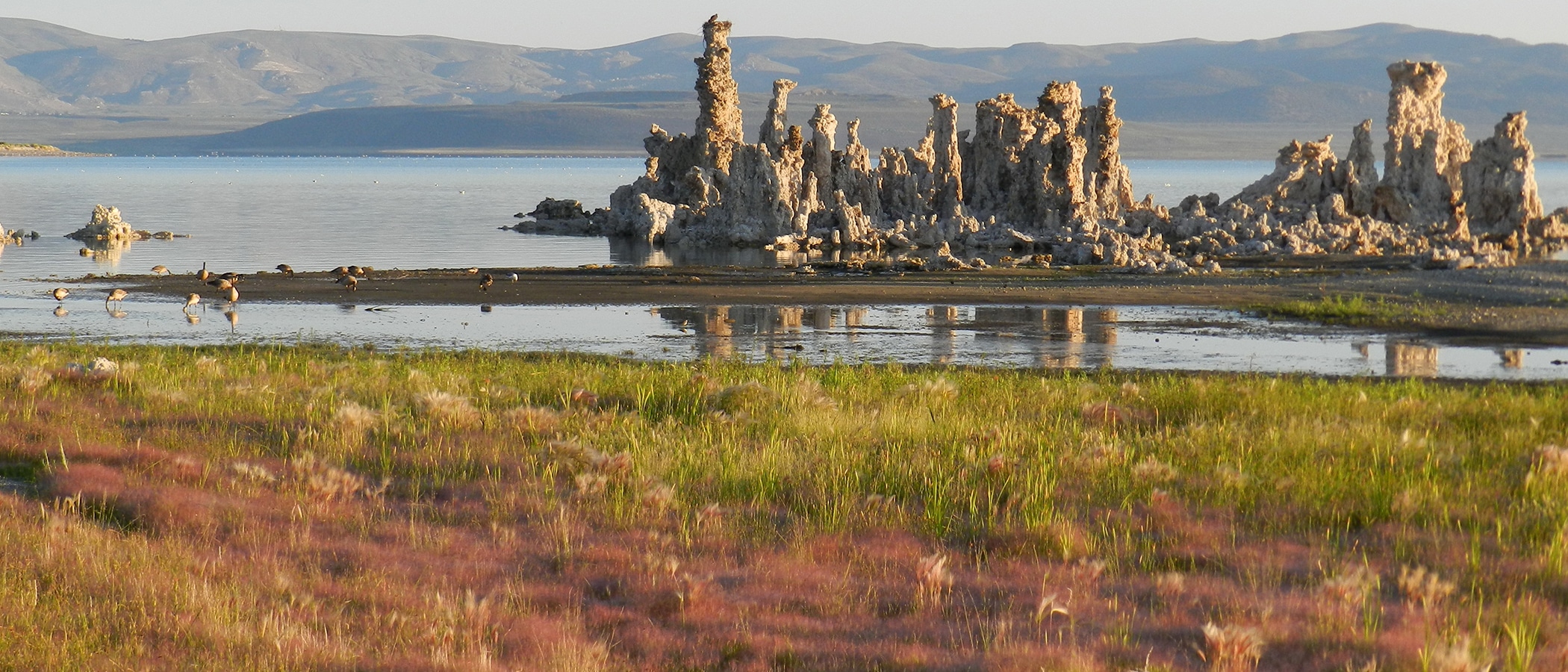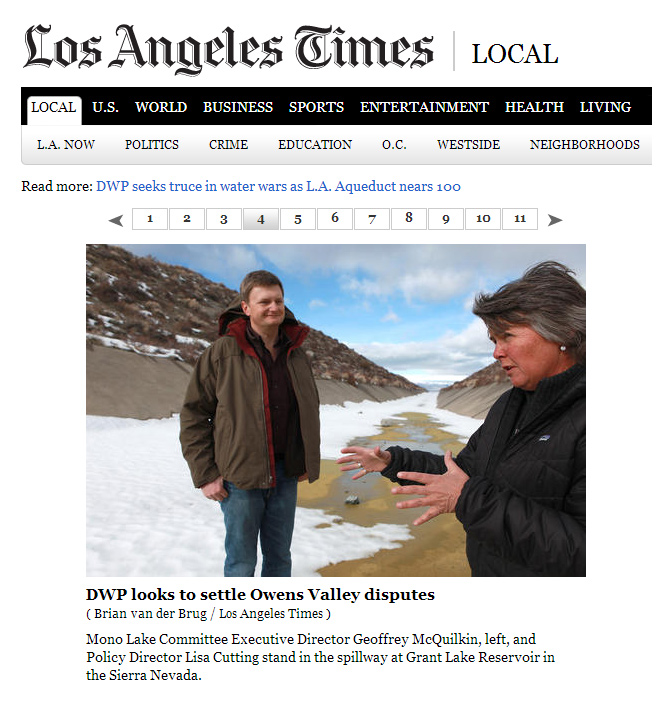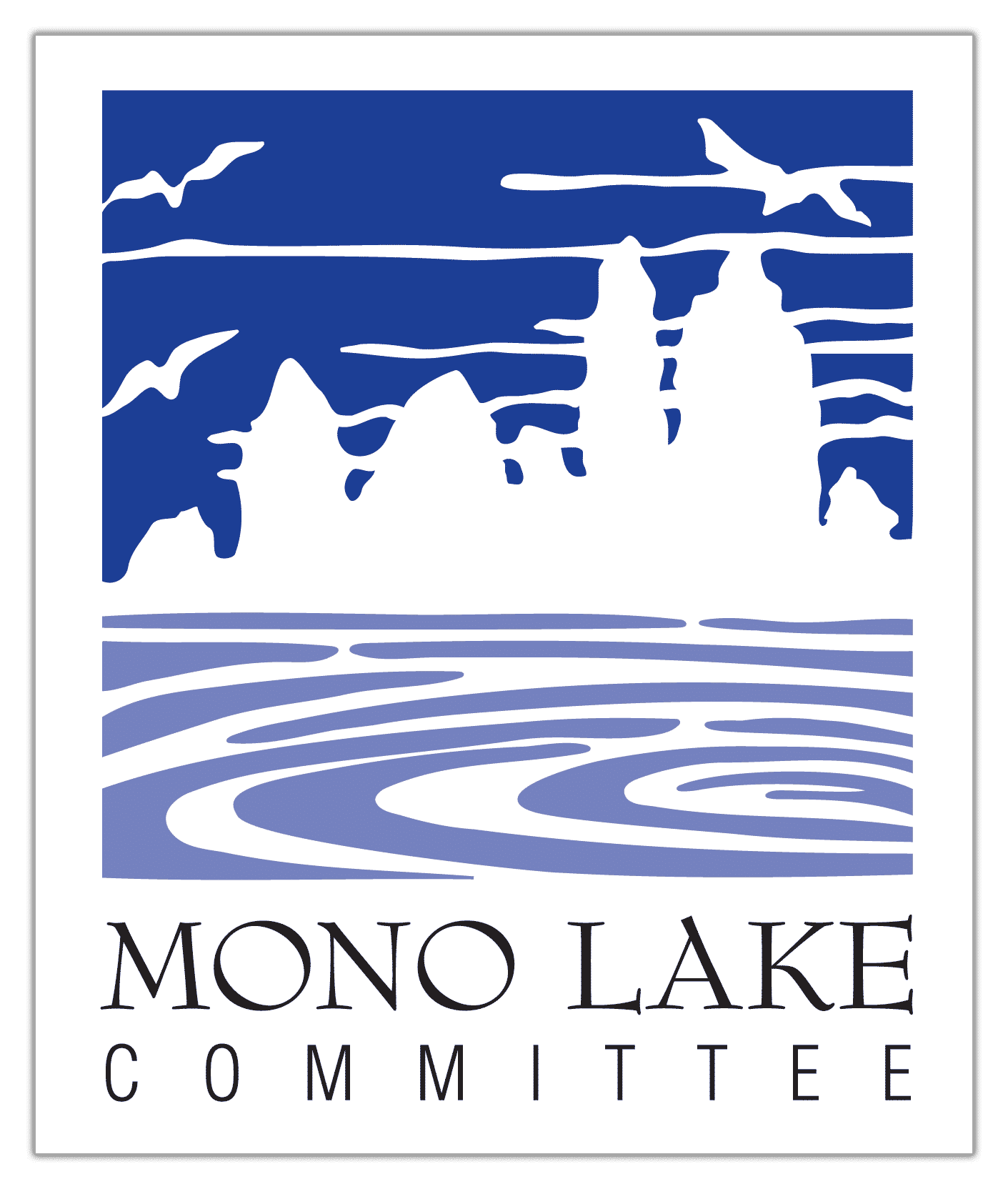
Starting at around 7:00pm last night, when the new LA Times article featuring Mono Lake Committee Executive Director Geoffrey McQuilkin and Eastern Sierra Policy Director Lisa Cutting—“DWP seeks truce in water wars as L.A. Aqueduct nears 100”—hit, things have been abuzz here at the Mono Lake Committee headquarters in Lee Vining.

The article touches on three different Eastern Sierra issues, among them is one that Mono Lake Committee members know we’ve been working on for quite some time—getting the LA Aqueduct infrastructure updated to be able to deliver both streamflows down tributary streams to Mono Lake as well as drinking water to the people of Los Angeles. For more background please read the article below from the Summer 2012 Mono Lake Newsletter.
Healthy streamflows require infrastructure upgrades
By Lisa Cutting, Mono Lake Committee Eastern Sierra Policy Director
From the Summer 2012 Mono Lake Newsletter
The collaborative process to resolve the issue of how to deliver State Water Board-appointed Stream Scientists’ prescribed high peak runoff flows down Mono Lake’s tributary streams is still very much in progress and kicking into high gear.
The process began in spring 2011 under the facilitated guidance of the Center for Collaborative Policy. The Los Angeles Department of Water & Power (DWP) and Mono Lake Committee staff have been meeting regularly to reach an agreement on how to overcome existing infrastructure obstacles so high flows can be delivered to Mono Lake’s tributary streams (see Winter & Spring 2012 Newsletter).
The Los Angeles Aqueduct system in the Mono Basin was built in an era when water export was the primary and singular objective. At the time, the concept that high spring runoff flows for the creeks would one day be a priority and a necessity for the creek’s natural recovery and sustained health was not anticipated. As a result there is currently no way for the antiquated aqueduct system to physically release the amount of water called for by the Stream Scientists out of Grant Lake Reservoir and down Rush Creek in wetter years. This, quite simply, is the problem.
Deferred upgrade
Back in 1998 when the State Water Board was finalizing restoration requirements for DWP under restoration Order 98-05, the Grant Lake Reservoir outlet was a hot topic. Faced with a heavy burden of action items and programs to put in place, DWP argued vigorously against having to construct an outlet facility. In its wisdom, the State Water Board didn’t eliminate the requirement, but instead allowed DWP time to test other methods for delivering the peak flows. The State Water Board also directed the Stream Scientists to refine the then-mandated stream restoration flows after no more than a decade of monitoring and additional studies had been conducted—knowing that the additional science would yield a better flow regime for the creeks.
After 12 years of testing alternative methods for delivering flows, DWP has not been able to reliably deliver high peak flows to Rush Creek. Simultaneously, the Stream Scientists have been busy conducting studies and monitoring the creeks, with results confirming the direction set in 1998. Their recommendation to the State Water Board is a refinement of flows necessary for the creeks, which includes even higher magnitude peak flows and lower winter base flows than 98-05 ordered. Additionally, and as part of the 98-05 requirement, the State Water Board specifically wanted a recommendation from the Stream Scientists on the Grant Lake Reservoir outlet that had been deferred back in 1998: Was it necessary or not?
Fast-forward to present day
After all these years of monitoring and per the 98-05 requirement, the Stream Scientists released their findings in the 2010 Synthesis Report (see Summer 2010 Newsletter). This comprehensive report summarizes the data collected, makes final flow recommendations for the creeks, and addresses the State Water Board’s question about the outlet. The Stream Scientists definitively state that (1) the alternative methods that DWP has been testing to deliver the peak flows haven’t worked, and (2) an outlet in Grant Lake Reservoir is needed to be able to deliver the necessary flows.
With that information guiding the collaborative process, the group has been grappling with what it means in terms of construction and implementation. Comparing various outlet options, weighing costs and benefits, and working out the myriad details of a comprehensive package that everyone can agree on has been an arduous process. But we’re still at the table trying to find a way to resolve the problems created by the lack of an outlet for Grant Lake Reservoir.

So now LA DWP wants to “end the water wars” in advance of the Centenial of the Aqueduct. The outgoing Mayor of Los Angeles is apparently interested in settling the old water issues as part of his legacy. (DWP also probably does not want to have protestors lined up outside the 100th Anniversary Gala at the Dorothy Chandler Pavilion.) The article mentions Grant Lake/Rush Creek, the Mammoth Water District litigation and the area near Bishop. How about their efforts to void the agreement regarding Owens Lake? Didn’t that flare up in the past year? Isn’t that a water war to settle?
Now the big issue…how does this 2013 desire to heal old water wounds apply to the review of the Mono Basin State Water Board decision that comes up in 2014? DWP could really show leadership and foresight by simply offering to sit down with all the interested parties and trying in good faith to bang out an agreement without room full of attorneys being involved.
OK I’m a dreamer. But I’m hopeful nonetheless.